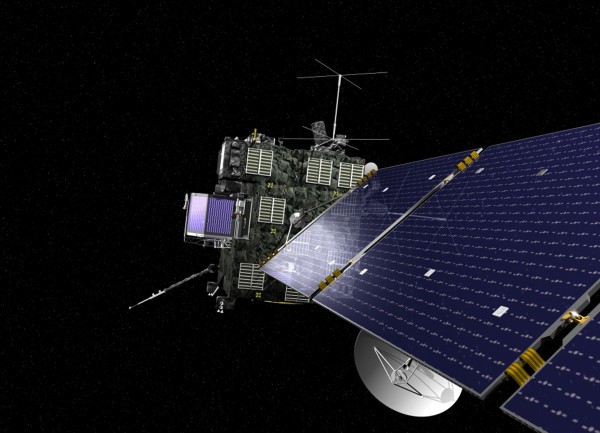How to Clean Up Space Junk in Earth's Orbit
| Ana Verayo | | Aug 27, 2014 08:11 AM EDT |
(Photo : Reuters) Space debris could potentially damage satellites and wipe out global communications and navigation systems.
US aerospace defense and security company Lockheed Martin is planning to build a tracking station with a Canberra-based tech firm that can follow space debris that are potentially dangerous to government and telecommunication satellites around Earth's orbit.
Electro-Optic Systems (EOS) and Lockheed Martin are collaborating to develop a new system in the Australian outback to track and eliminate space junk.
Like Us on Facebook
Ben Greene, chief executive of EOS says that NASA and all other space agencies strongly believe that space junk can easily obliterate a satellite and in effect, create an avalanche of collisions where debris can wipe out other satellites until nothing is left.
This means, there will be no communications, weather updates, or navigation satellites. And this catastrophic event could happen within 15 years.
According to Trevor Thomas, a spokesman for Lockheed Martin, there are about 200 threats everyday from orbiting satellites. Although most satellites can sustain a minimal amount of damage from space junk, maintenance can cost up to US$500 million.
This tracking station will be comprised of a global network of sensors that will initially emanate from the EOS headquarters at Mount Stromlo in Canberra along with a new facility in Western Australia.
Operators will now be informed of the potential damage risk from space debris where the fundamental purpose of this tracking station is to move satellites that are most at risk.
Lockheed and EOS will now use an advanced optical and laser tracking technology that was first used in the battlefields of Iraq and Afghanistan. This technology can track debris moving at a speed of 17,500 miles an hour.
To date, there are about 300,000 bits of space junk ranging in size from one centimeter to larger ones that have been orbiting the Earth for more than half a century.
EOS has been tracking down space junk for years and even investing AUS$80 million in developing laser and optical tracking systems.
Greene also said that EOS aims to cover the next five to six years tracking space debris with their laser technology, along with the U.S. Air Force Space Fence Radar.
After tracking these potential dangerous space debris, EOS and Lockheed along with other systems will conduct an orbital space clean-up that will remove dead satellites as well.These ground based radars will then nudge smaller space junk into lower orbit to burn up in the atmosphere.
TagsAustralia Builds a Laser Tracking System to Eliminate Space Junk, Lockheed Martin, EOS, australia zaps space junk with plasma beams, laser tracking system to clean up orbit, space junk, space debris, how to clean up space junk, laser tracking system space debris, laser tracking system space junk, Australia
©2015 Chinatopix All rights reserved. Do not reproduce without permission
EDITOR'S PICKS
-

Did the Trump administration just announce plans for a trade war with ‘hostile’ China and Russia?
-

US Senate passes Taiwan travel bill slammed by China
-

As Yan Sihong’s family grieves, here are other Chinese students who went missing abroad. Some have never been found
-

Beijing blasts Western critics who ‘smear China’ with the term sharp power
-

China Envoy Seeks to Defuse Tensions With U.S. as a Trade War Brews
-

Singapore's Deputy PM Provides Bitcoin Vote of Confidence Amid China's Blanket Bans
-

China warns investors over risks in overseas virtual currency trading
-

Chinese government most trustworthy: survey
-

Kashima Antlers On Course For Back-To-Back Titles
MOST POPULAR
LATEST NEWS
Zhou Yongkang: China's Former Security Chief Sentenced to Life in Prison

China's former Chief of the Ministry of Public Security, Zhou Yongkang, has been given a life sentence after he was found guilty of abusing his office, bribery and deliberately ... Full Article
TRENDING STORY

China Pork Prices Expected to Stabilize As The Supplies Recover

Elephone P9000 Smartphone is now on Sale on Amazon India

There's a Big Chance Cliffhangers Won't Still Be Resolved When Grey's Anatomy Season 13 Returns

Supreme Court Ruled on Samsung vs Apple Dispute for Patent Infringement

Microsoft Surface Pro 5 Rumors and Release Date: What is the Latest?










